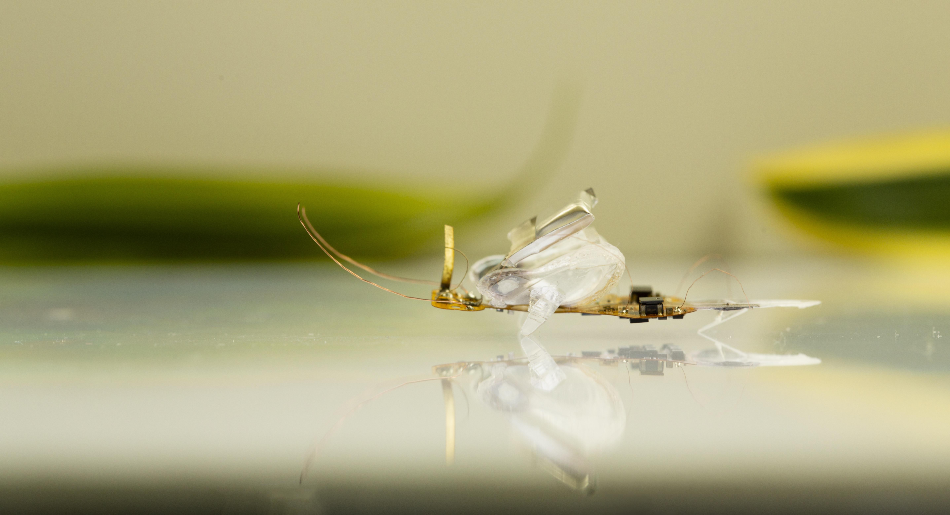Dec 19 2019
Visualize swarms of robotic insects traveling around while performing different tasks. Although it might seem like science fiction, it is actually more viable than imagined.
 An untethered model that is fully wireless and autonomous, weighing less than 1 g and carrying its battery and all electronic components on its back. Image Credit: EPFL
An untethered model that is fully wireless and autonomous, weighing less than 1 g and carrying its battery and all electronic components on its back. Image Credit: EPFL
Scientists from EPFL’s School of Engineering have created a soft robotic insect, which is propelled by artificial muscles at a speed of 3 cm per second.
The researchers built two versions of this soft robot, named DEAnsect. The first one is tethered with the help of ultra-thin wires and is extremely robust. It can be hit with a fly swatter, squashed by a shoe, or folded without affecting its potential to move. The second version is a fully wireless and autonomous, untethered model that weighs less than 1 g. This version carries all electronic components and its battery on its back.
This smart insect is fitted with a microcontroller that acts as a brain and photodiodes as eyes, which enable it to identify black and white patterns. This functionality allows DEAnsect to follow any line drawn on the ground.
DEAnsect was created by a group at EPFL’s Soft Transducers Laboratory (LMTS), in collaboration with the Integrated Actuators Laboratory (LAI) and colleagues from the University of Cergy-Pontoise, France. The study was reported in Science Robotics.
Vibration Propulsion
DEAnsect is fitted with dielectric elastomer actuators (DEAs), a kind of hair-thin artificial muscle that propels the insect forward using vibrations. The insect is extremely lightweight and fast mainly due to these DEAs. They also allow it to move on various types of terrain, such as undulating surfaces.
The artificial muscles include an elastomer membrane interposed between two soft electrodes. These electrodes are fixed to each other upon applying a voltage, thus compressing the membrane, which returns to its original shape upon turning off the voltage. Such muscles are provided on each of the three legs of the insect. Movement is produced by turning the voltage on and off very rapidly—more than 400 times per second.
The researchers used nanofabrication methods to allow the artificial muscles to function at comparatively low voltages, by minimizing the thickness of the elastomer membrane and by creating highly conductive, soft electrodes measuring just a few molecules thick. This innovative design enabled the team to considerably decrease the size of the power source.
DEAs generally operate at several kilovolts, which required a large power supply unit. Our design enabled the robot, which itself weighs just 0.2 gram, to carry everything it needs on its back. This technique opens up new possibilities for the broad use of DEAs in robotics, for swarms of intelligent robotic insects, for inspection or remote repairs, or even for gaining a deeper understanding of insect colonies by sending a robot to live amongst them.
Herbert Shea, Director, LMTS
“We’re currently working on an untethered and entirely soft version with Stanford University,” added Shea. “In the longer term, we plan to fit new sensors and emitters to the insects so they can communicate directly with one another.”
A soft robotic insect that survives being flattened by a fly swatter
Researchers at EPFL have developed an ultra-light robotic insect that uses its soft artificial muscles to move at 3 cm per second across different types of terrain. The robot can be folded or crushed and yet continue to move. Video Credit: EPFL